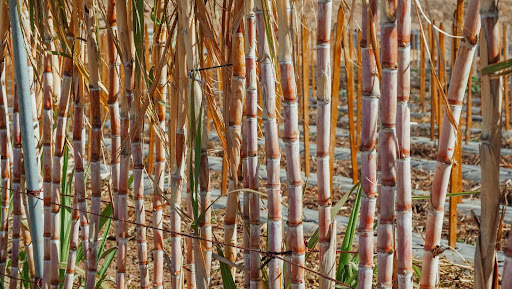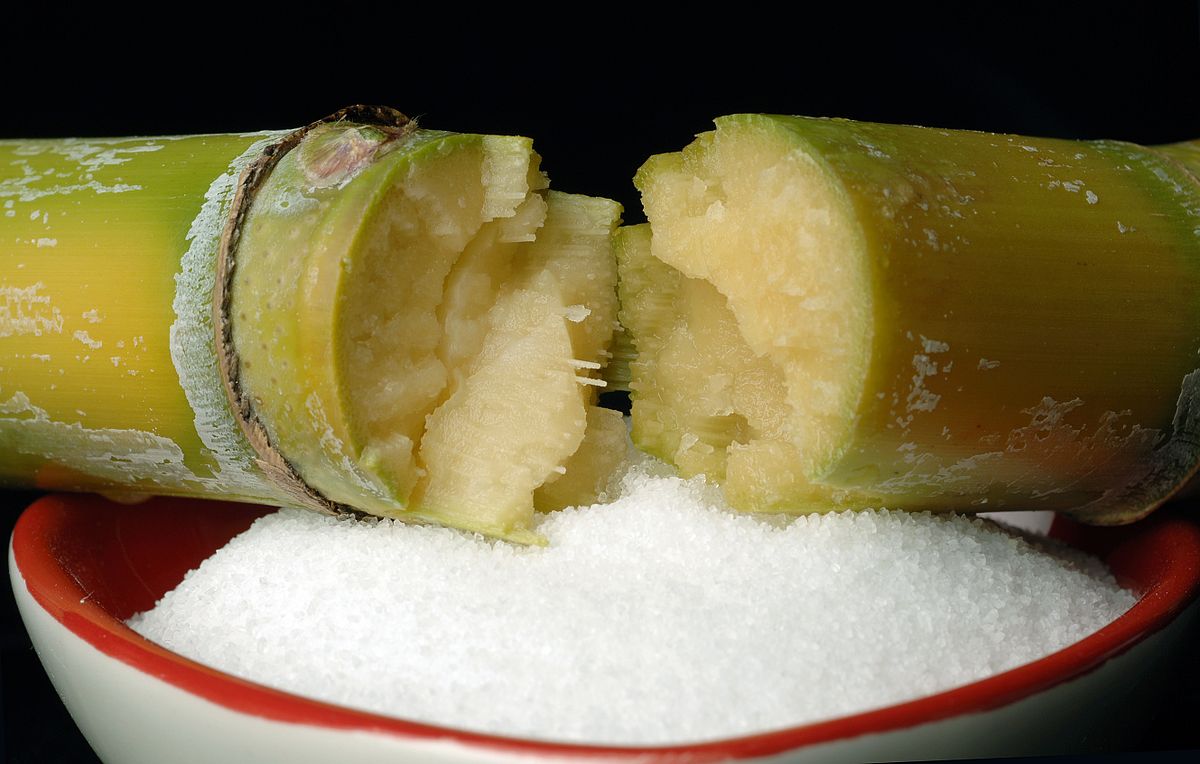Effective Cane Sugar Processing: Making Best Use Of Yield and Pureness
Effective Cane Sugar Processing: Making Best Use Of Yield and Pureness
Blog Article
A Comprehensive Guide to the Ecological Effect and Sustainability Practices in Cane Sugar Handling
The ecological impact of walking cane sugar handling offers a complex array of obstacles that warrant careful exam. From dirt destruction and excessive water usage to the carbon footprint linked with growing and manufacturing, the consequences of conventional techniques are far-reaching. What specific techniques can be applied to strike a balance in between efficiency and environmental stewardship?
Introduction of Walking Cane Sugar Handling
Walking stick sugar handling includes a series of systematic actions that change sugarcane into polished sugar. Initially, gathered sugarcane is delivered to refining facilities, where it undertakes cleaning to get rid of soil and debris. Following this, the walking cane is squashed to draw out juice, which is then clarified by removing contaminations via home heating and the addition of lime.
The cleared up juice goes through dissipation, where water is gotten rid of to concentrate the sugar web content. This concentrated syrup is after that crystallized with cooling, permitting sugar crystals to create. These crystals are divided from the continuing to be syrup making use of centrifugation, resulting in raw sugar. To accomplish refined sugar, the raw item undertakes additional filtration procedures, which might include cleaning and filtering to eliminate remaining pollutants and color.
The end product is then dried and packaged for distribution. Throughout this entire process, maintaining efficiency and quality assurance is vital to ensure the sugar meets market requirements. Each step in walking cane sugar processing not only adds to the end product but likewise has implications for source use and waste generation, establishing the phase for discussions on sustainability and ecological impacts related to sugar manufacturing.
Environmental Difficulties of Manufacturing
The manufacturing of walking cane sugar offers several substantial environmental difficulties that warrant focus. One main concern is the considerable use of agrochemicals, including fertilizers and chemicals, which can lead to dirt deterioration, biodiversity loss, and contamination of regional water resources. The overflow from sugarcane fields frequently brings these chemicals into nearby environments, interfering with marine life and influencing the wellness of neighborhoods reliant on these water bodies.
One more difficulty is the high power intake connected with sugarcane processing. The boiling and refining stages require considerable heat, primarily generated by burning nonrenewable fuel sources, adding to greenhouse gas exhausts. In addition, the expansive land area needed for sugarcane farming can bring about logging and habitat destruction, further intensifying climate modification and threatening wild animals.
Additionally, the labor techniques in some regions increase honest issues, as workers might deal with poor working conditions and insufficient earnings. This situation usually continues a cycle of destitution in local areas. Cane Sugar Processing. Attending to these ecological obstacles is important for developing more sustainable methods in cane sugar production, ultimately benefiting both the environment and the areas involved in this industry
Water and Land Use Impact
Water resources and land application are important elements in the cane sugar market that substantially influence the atmosphere. The farming of sugarcane calls for considerable water input, with quotes suggesting that it can take in approximately 2,000 liters of water per kg of sugar generated. This extensive use of water often brings about depletion of neighborhood water sources, influencing not only the sugarcane plantations however additionally surrounding ecosystems and areas that depend on the very same water resources for farming and domestic usage.

Moreover, land use for sugarcane cultivation can cause see it here logging and the conversion of all-natural environments into monoculture haciendas. This method reduces biodiversity, disrupts local communities, and adds to soil destruction. The growth of sugarcane areas often trespasses on useful farming land, creating competition for resources between food and biofuel production.
Sustainable methods, such as optimizing irrigation methods and carrying out crop rotation, are necessary to minimize these effects. By embracing more effective water use and land monitoring strategies, the cane sugar industry can minimize its ecological impact, making certain an equilibrium in between agricultural productivity and ecological conservation.
Greenhouse Gas Emissions
Greenhouse gas discharges stand for a substantial ecological problem within the cane sugar handling industry, especially as agricultural methods increase to satisfy international demand. The farming of sugarcane, a plant that prospers in exotic climates, counts greatly on synthetic fertilizers and pesticides, which add to laughing gas emissions. In addition, land-use modifications, consisting of logging for brand-new sugarcane vineyards, launch co2 stored in plant life and dirt.
Throughout handling, energy consumption is another significant source of greenhouse gas emissions - Cane Sugar Processing. Lots of sugar mills make use of nonrenewable fuel sources to power machinery and generate heat, resulting in significant carbon footprints. In addition, the transportation of raw sugarcane and ended up items includes layers of exhausts with gas burning in cars
This entails evaluating present agricultural techniques, processing approaches, and transport systems to determine areas for improvement and reduction. Attending to greenhouse gas emissions is crucial for promoting an extra lasting cane sugar sector in a transforming environment.

Sustainable Practices and Innovations
Lasting methods and innovations are progressively crucial in the cane sugar processing sector as stakeholders seek to decrease environmental impacts while maintaining efficiency. One significant innovation is the application of incorporated plant administration, which maximizes resource use by incorporating dirt administration, read what he said pest control, and plant turning methods. This method boosts yield while reducing chemical inputs and preserving dirt health and wellness.
In addition, the fostering of eco-friendly power sources, such as biomass from sugarcane residues, has actually gotten traction - Cane try this site Sugar Processing. By transforming waste products into energy, processing facilities can decrease their reliance on nonrenewable fuel sources, consequently decreasing greenhouse gas emissions
Water monitoring practices have likewise seen improvements with the recycling and reusing of water in handling plants, significantly reducing freshwater consumption. Innovations in innovation, such as precision farming, enable farmers to monitor crop health and resource use a lot more effectively, guaranteeing lasting growing practices.
Furthermore, qualification programs like Fair Profession and Rainforest Partnership urge eco liable farming methods and promote social equity within the supply chain. By embracing these sustainable practices and developments, the walking cane sugar processing sector can improve its strength and contribute favorably to environmental stewardship.
Conclusion
The environmental impact of walking stick sugar processing provides considerable obstacles, consisting of dirt degradation, high water consumption, and greenhouse gas exhausts, together with honest issues associated with labor practices. Addressing these concerns via sustainable practices, such as integrated crop monitoring, renewable resource fostering, and water recycling, is crucial. By promoting socially equitable and environmentally accountable techniques in sugar manufacturing, the industry can alleviate its damaging results, ensuring a much more lasting future for both areas and ecosystems associated with this sector.
Cane sugar processing involves a collection of systematic actions that change sugarcane into refined sugar. Each action in walking cane sugar handling not only adds to the final item however additionally has implications for source usage and waste generation, setting the phase for discussions on sustainability and environmental impacts connected with sugar manufacturing.
Greenhouse gas exhausts represent a significant environmental problem within the cane sugar processing market, particularly as agricultural practices expand to meet international demand.Lasting methods and advancements are significantly crucial in the walking cane sugar processing market as stakeholders seek to lower environmental effects while keeping performance.The ecological impact of walking stick sugar handling presents considerable difficulties, consisting of soil degradation, high water usage, and greenhouse gas discharges, alongside ethical concerns connected to labor techniques.
Report this page